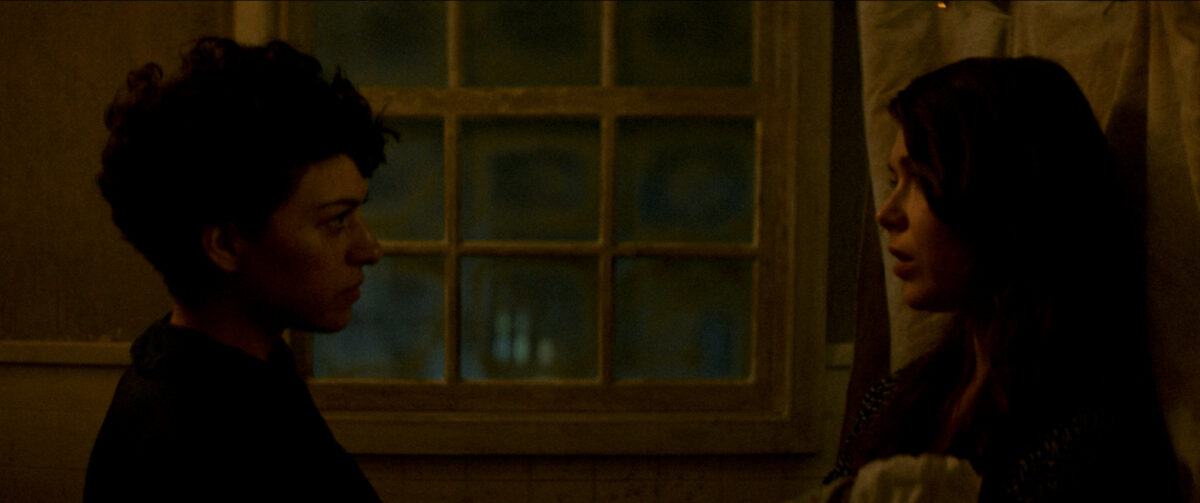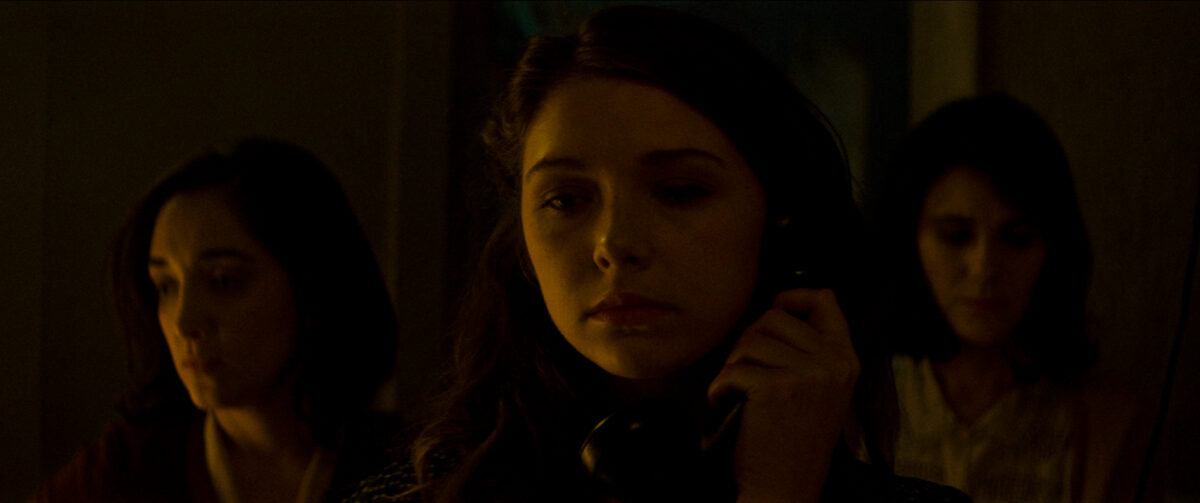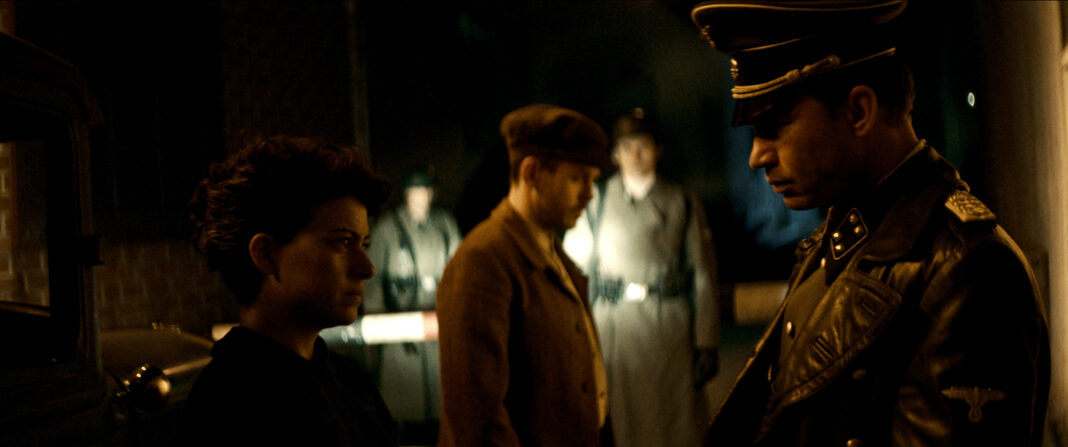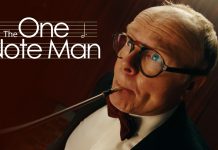Film-maker Rami Kodeih has made a number of acclaimed short films over the years – and in his latest offering ALINA, he focuses on the plight of children persecuted during World War II.
Film And TV Now spoke with the film-maker about his film and the background to production.
FILM AND TV NOW: What fascinates you about the period in which ALINA is set?
RAMI KODEIH: We felt that the story, while set in the past, speaks to our current moment — especially the way in which acts of love can be a form of resistance against hate and fascism.
FTVN: Did you do much research before writing the screenplay?
RK: We did do research, which included talking with an expert at our local Holocaust Museum and meeting with an incredible Holocaust survivor, who shared his experiences first-hand with us. We did our best given our limited means and time and are eternally grateful to the people who helped us along the way.
FTVN: Tell us about your cast.
RK: Many members of our cast had a personal understanding of how the historical moments depicted in the film relate to our current climate. Our cast included Jewish, Polish, BIPOC, and refugee actors and was led, of course, by a group of remarkably talented women: Alia Shawkat, Rebeca Robles, Dorota Puzio, Erika Soto, and Jillian Federman.
FTVN: Tell us about your production team.
RK: We had a wonderful line producer/producer, Courtney Prather, who really helped bring together a great team for the film all the way through post-production.
FTVN: You use guns in the film during one sequence. Tell us about the logistics and safety of working with guns on a short like this.
RK: For a short like this and especially that the actors are in close proximity, we used fake weapons. We added the gunfire in post and tried to remain as realistic as possible.

FTVN: What were your cinematic and visual influences when putting the film together?
RK: While many films inspire us day to day, my greatest reference for the cinematography and film-making in general is life. In times of war, my family often had no electricity.
My memory of the candles we used — as well as the frenetic chaos and energy of war I remember as a child — was a source of inspiration for the cinematography, sound, and human behavior.
Adding to that, we are inspired by several giants in cinema history like Cuaron, Inarritu, Scorsese, and many others.
FTVN: Where did you shoot and for how long?
RK: We shot in Los Angeles for about 6 days.
FTVN: Matt Plaxco and Zoe Keating add some depth to the piece with their cinematography and musical contributions. Tell us about your working relationship with the pair respectively.
RK: I already had a very clear vision and approach on how the film was going to be shot. I’ve been instinctively finding myself gravitating towards an immersive and visceral style.
On the music side, I had discovered Zoe Keating’s music during my music research, which I’ll get into in a bit. Regarding the cinematography and because of lack of budget and resources, I started designing the film before finding the cinematographer. Then I met with Matt and we started chatting, and I explained what I was seeing in terms of mise-en-scène of camera and actors.
We also chatted about my experience as a child of war and how we lived without electricity. So immediately he was able to picture the look and the type of lighting to enhance the rawness and the immersion we were aiming for.
On the music end, I just fell in love with Zoe’s music and how she’s a solo musician with her cello creating pieces of music that are genius in my opinion. At first when I started editing the film in our apartment’s living room, I thought of her music as the perfect temp music and later in the process after finishing the edit, it felt like her music was composed for this short.
We reached out to Zoe’s team and are truly honored to have her music in our film.
FTVN: Tell us about the Costume Design.
RK: We worked with Kris Deskins, a costume designer who worked us to ensure the costumes were not only accurate historically but also spoke to each character’s interior life.
Kris has an incredible eye for detail and was deeply committed to making everything accurate, even if the costume details weren’t captured on camera, such as the characters’ stockings.
She also did an amazing job of creating costume pieces herself that needed to be used for specific plot turns, for example the item of clothing used to smuggle the vaccines, and the cherry-print blanket used for the baby.

FTVN: How did you raise finance for the film?
RK: We worked with our extraordinary EPs to make the film possible, Atlanta Theatre Club and Rubber Duck Films. The short film resonated strongly with EPs Joshua and Rachelle Owen especially, as they have Polish-Jewish heritage, and they were supportive not only as a film collaborators but as friends every step of the way.
FTVN: What were the key challenges in creating the period look for the film on a limited budget for a short film?
RK: Everything was a challenge, from finding accurate locations to locating SS costumes that could fit the actors to finding historically accurate vehicles from that era. It was made possible through the dedication of the production team and crew but was certainly a challenge.
FTVN: What issues and themes would you like to explore in future works?
RK: There are many themes we would like to explore in future works, but one that comes to mind is the theme of chosen family and what unexpectedly bonds people together in moments of change or conflict.
FTVN: Would you like to expand the short into a feature version?
RK: Yes, we would love to explore a potential feature version. The film has now screened in 20 countries and over 170 festivals around the world so far…Being able to interact with audiences and festivals, even virtually, has encouraged us to continue exploring the world of these women.
FTVN: How has COVID-19 affected your development and evolution as a film-maker?
RK: I probably won’t know for sure until more time has passed, but I would say that it has only deepened my appreciation for in-person collaboration and the magic and joy of being on set. When it’s safe again, I can’t wait to work with our actors and crew again.
FTVN: Finally, what are you most proud of about this short film?
RK: We are grateful to share a story that highlights unsung heroes: the everyday women who committed extraordinary acts of bravery during the Holocaust, smuggling children to safety.
This is something the Nazis would immediately execute a person for. Despite all the risks and personal stakes involved, this network of women collectively saved over 2500 children. It speaks to the power of love and hope, and we’re very thankful to be able to share that story in times like these.





























